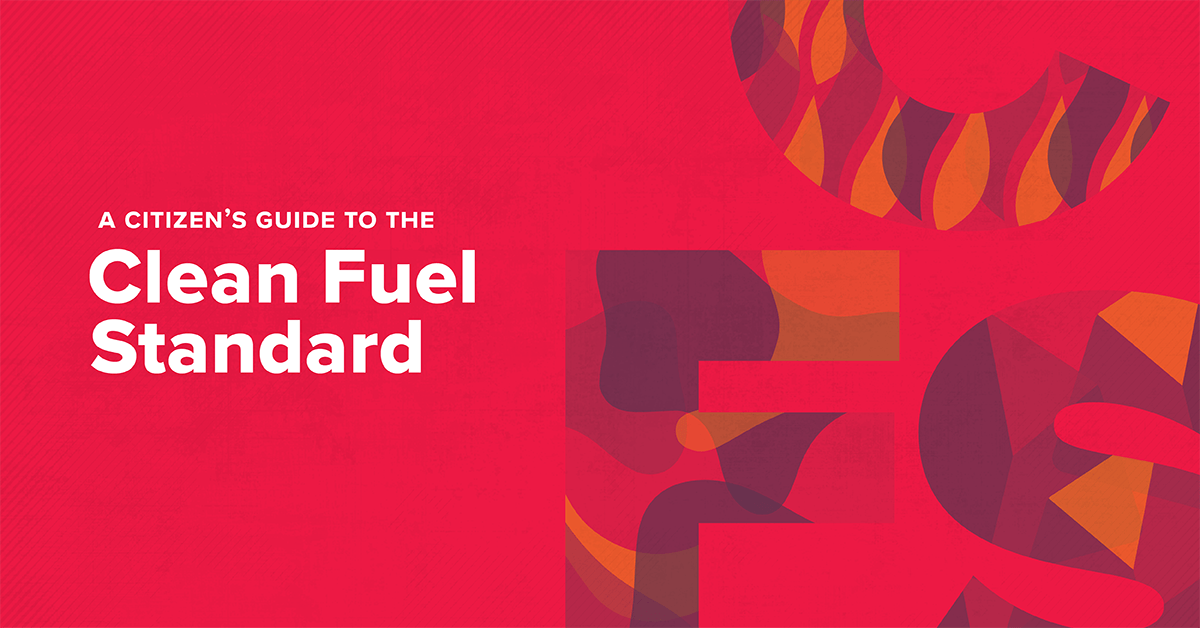Authors: Marla Orenstein and Jade McLean
Executive Summary
In 2022, the Clean Fuel Standard (CFS) will come into force – a major piece of the federal government’s climate policy framework. The CFS is being promoted by the federal government as an effective way to help Canada reach its goal of a 30% reduction in GHG emissions by 2030. The CFS is intended to drive emissions reductions across all facets of society, in areas as varied as households, universities, hospitals, small manufacturing, retail businesses, food processing plants, shopping malls and government operations.
The rationale for the policy is sound. There is no question that reducing global GHG emissions is critical, and Canada must do its part.
But there are also risks. The policy needs to be designed and implemented in a way that actually results in lower emissions and doesn’t accidentally put Canada out of business.
These risks are especially high given that some aspects of the policy are new and untried. Canada will be the first jurisdiction in the world to extend this type of policy to fuels used outside of transportation, including fuels used for industrial purposes or for residential or commercial heating.
This report is intended to help answer the many questions Canadians have about how – and whether – the Clean Fuel Standard will work:
- Is the policy capable of meeting its GHG reduction objectives?
- What will it cost?
- How will it work?
- Who could come out ahead?
- What are the impacts on different sectors?
Before coming into force there are outstanding issues to be addressed:
- Show your work. The government has yet to publicly produce a cost-benefit analysis, economic analysis or regulatory analysis for the CFS. Given provincial and federal regulations established in the last four years that also drive emissions reductions, it is incumbent on the federal government – before it introduces additional regulation – to demonstrate that the policy will be able to achieve its reduction targets at a cost that is proportionate to the emissions reductions derived.
- Be prepared to adapt. The federal government should be prepared to listen to legitimate concerns from different stakeholders and to make real change, where needed – both before the policy comes in and in the years after.
- Plan for how to get supporting infrastructure built quickly. It will take time to plan and construct biofuel production facilities, pipelines to transport renewable natural gas and hydrogen, and transmission lines and grid capacity to support electrification. The federal government must provide leadership on several fronts to get this done in a predictable and realistic timeframe.
- Provide protections for the EITE sector. Without sufficient protections in place, the CFS risks damaging the “energy-intensive, trade-exposed” (EITE) sector’s competitiveness, burdening these industries with duplicated costs, and creating an uneven playing field. The federal government must find ways to build competitiveness protections into the policy – or risk sending business out of the country.
- Build in flexibility to ensure that the CFS actually results in fuel decarbonization, not just payments and penalties. Until new technologies such as renewable natural gas are ready and supply can be delivered, many fuel suppliers will have few options for decarbonizing, and credit availability may be limited. The policy provisions to bridge this timing gap will likely not be sufficient. The government needs to keep an eye on the technology lifecycle and make changes as needed so that fuel suppliers are able to comply.
For the CFS to be both effective and fair, it must concentrate on driving down emissions and not just moving money around to ensure compliance. Otherwise, the result will be both extremely expensive and inefficient. It’s not too late for the federal government to get it right – if done properly, the CFS can be an effective tool.
Also read: Update on the federal Clean Fuel Standard

